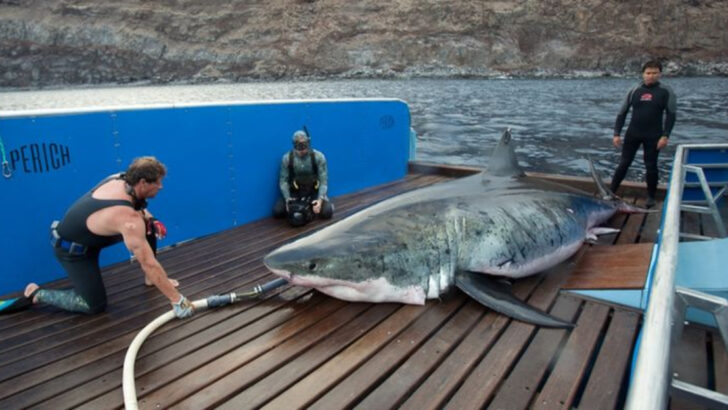The ocean hides giants, but some are too massive to stay unnoticed.
Among them is a great white shark so colossal it leaves even seasoned researchers in awe. This isn’t your average apex predator—this beast is a true legend of the deep, dominating the Atlantic with its sheer size and presence.
With every sighting, it sparks both fascination and fear. How big is it? Where was it spotted? Could there be even larger sharks lurking beneath the waves?
From jaw-dropping measurements to eerie encounters, these 11 details reveal everything we know about the largest great white ever recorded in the Atlantic.
Record Size
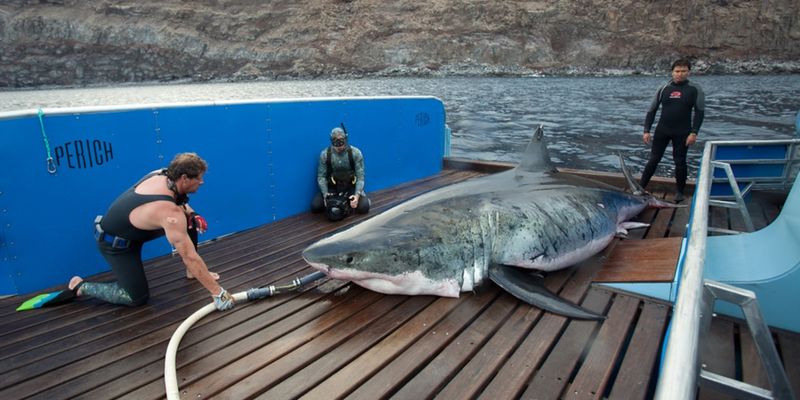
The largest great white shark observed in the Atlantic Ocean reached a phenomenal length of over 20 feet. This remarkable size places it among the biggest great whites ever recorded.
Its immense body, weighing as much as a small boat, leaves onlookers in awe. Such size not only reflects its age but also its dominance in the ocean.
The shark’s presence is a testament to the abundant marine life in the Atlantic, providing it with the sustenance required to grow to such a size. Its sheer mass is crucial for understanding the limits of shark growth.
Age Estimation
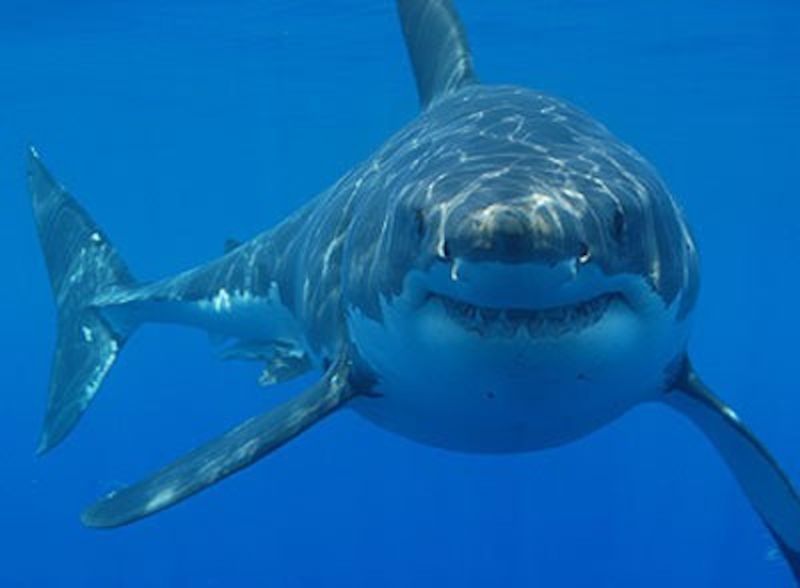
This giant’s age is estimated to be over 50 years, based on its size and physical characteristics. Great white sharks grow slowly, and their size correlates with their age.
The longevity of such a creature offers biologists valuable insights into the life span and aging process of apex predators.
The shark’s advanced age is marked by scars and a weathered exterior, chronicling its survival through decades in the wild. Each scar tells a story of battles and survival, adding to the intrigue surrounding this ancient ocean dweller.
Distinctive Features
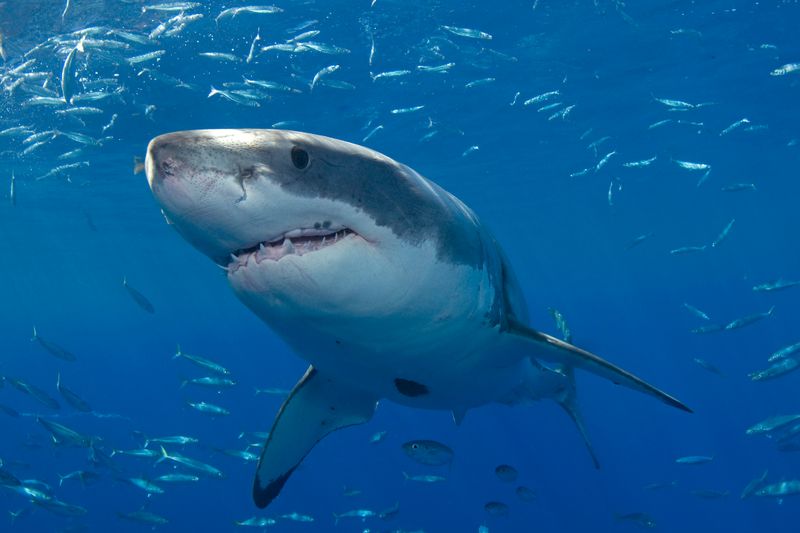
Distinctive features of the largest Atlantic great white shark include unique scars and fin markings. These identifiers help researchers in tracking and studying individual sharks.
Such marks are often the result of territorial battles or encounters with other marine creatures. They offer key insights into the shark’s history and interactions within its habitat.
Researchers use photographic records of these features to monitor the shark’s movements and behavior. The distinctive patterns serve as a fingerprint, making it easier to recognize and gather data on this particular giant.
Feeding Habits
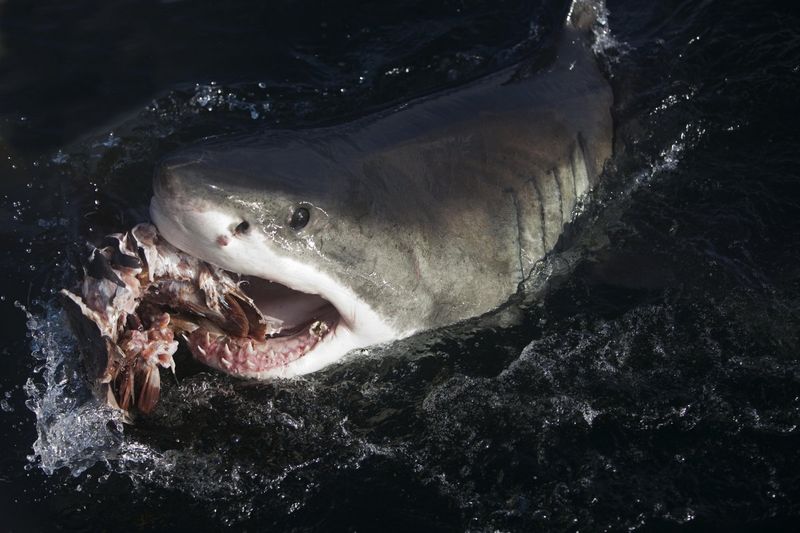
This enormous great white shark’s feeding habits are as impressive as its size. It preys on seals, fish, and other marine mammals, showcasing its role as a top predator.
Its hunting strategies involve stealth and power, often launching surprise attacks from below. This technique ensures a high success rate in capturing agile prey.
Understanding its diet is crucial for marine ecologists who study the balance of ocean ecosystems. The shark’s predation patterns help maintain healthy marine populations, highlighting its importance in the ecological hierarchy of the Atlantic.
Migration Patterns
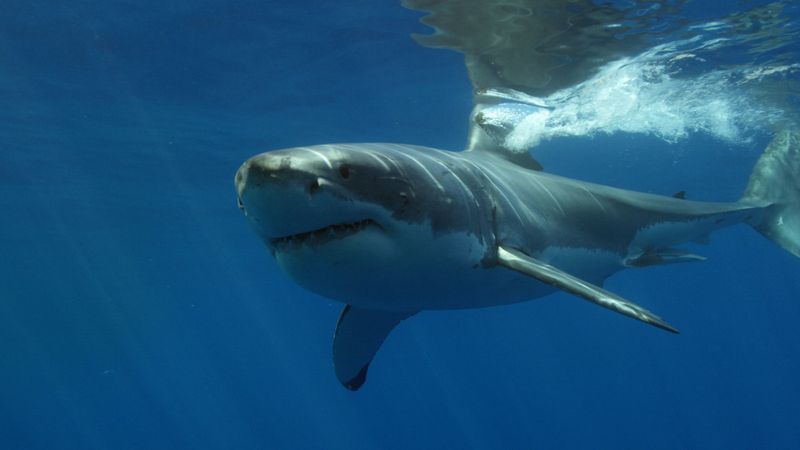
The largest Atlantic great white shark is known for its extensive migration patterns. It travels thousands of miles annually, navigating vast ocean expanses.
These migrations are crucial for its survival, allowing it to follow prey and find optimal breeding grounds. Seasonal movements often coincide with temperature changes and prey availability.
Researchers track these patterns using satellite tags, gaining insights into the shark’s behavior and environmental preferences. Such data is vital for conservation efforts, as it helps define critical habitats that need protection to support shark populations.
Reproductive Behavior
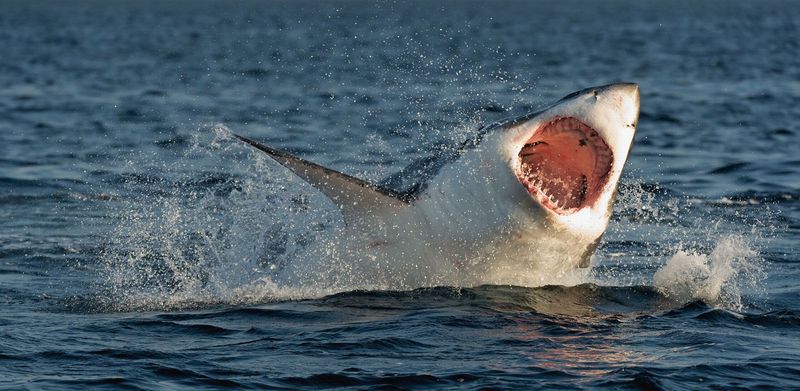
Reproductive behavior of the largest great white shark involves giving birth to live young. Each litter can consist of several pups, which are independent at birth.
This reproduction method is known as ovoviviparity, where embryos develop in eggs that hatch within the mother’s body. It minimizes predation risk on newborns.
The survival of these pups is vital for the continuation of shark populations. Conservationists focus on protecting breeding grounds to ensure healthy offspring. Understanding these reproductive strategies aids in crafting effective marine conservation policies.
Historical Sightings
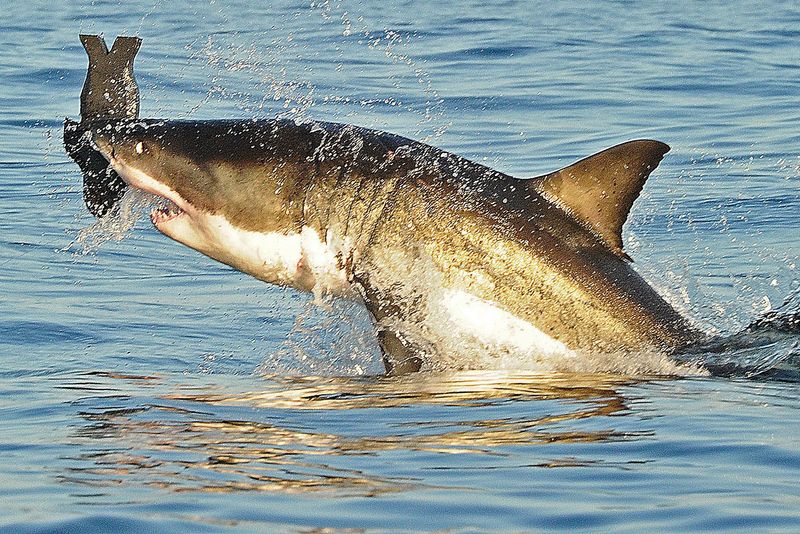
Historical sightings of the largest great white shark in the Atlantic have been recorded for decades. These accounts often come from fishermen and coastal communities.
Such stories contribute to the lore surrounding these magnificent creatures and provide anecdotal evidence of their longstanding presence.
Exploring these historical records offers a glimpse into human-shark interactions over the years. They serve as cultural touchstones, illustrating how perceptions and understandings of sharks have evolved. Engaging with these stories helps bridge the gap between past beliefs and current scientific knowledge.
Conservation Status
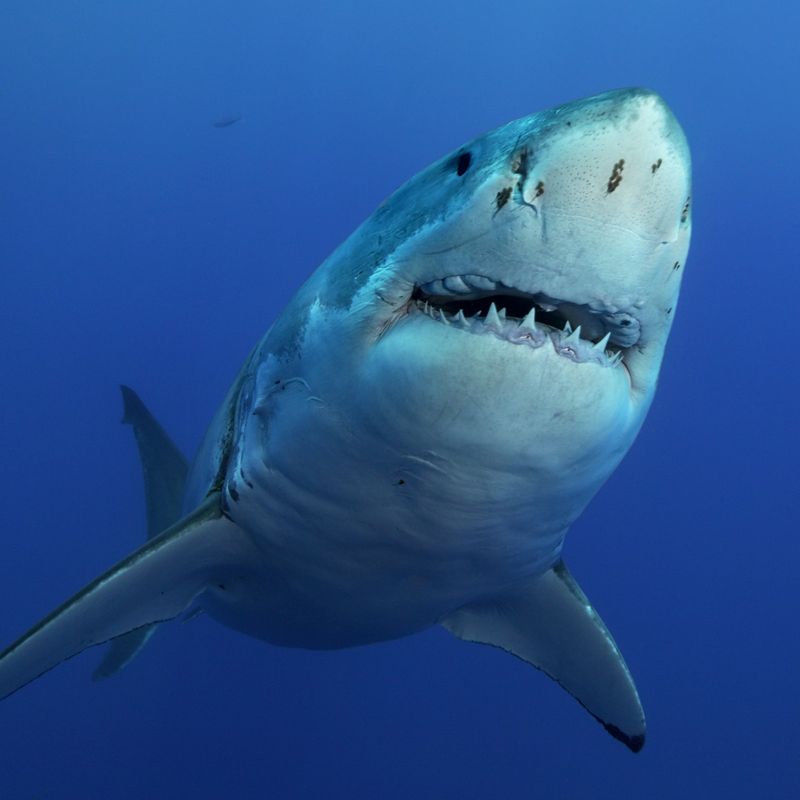
The conservation status of the great white shark is a concern for marine biologists. They are listed as vulnerable, with their population numbers affected by overfishing and habitat loss.
Efforts to conserve these sharks involve establishing marine protected areas and regulating fishing practices to prevent accidental catches.
Awareness campaigns also play a crucial role, educating the public about the importance of sharks in marine ecosystems. Protecting these apex predators ensures the health of ocean habitats, as they maintain a balance in the food chain, underscoring their ecological significance.
Shark’s Role in Culture
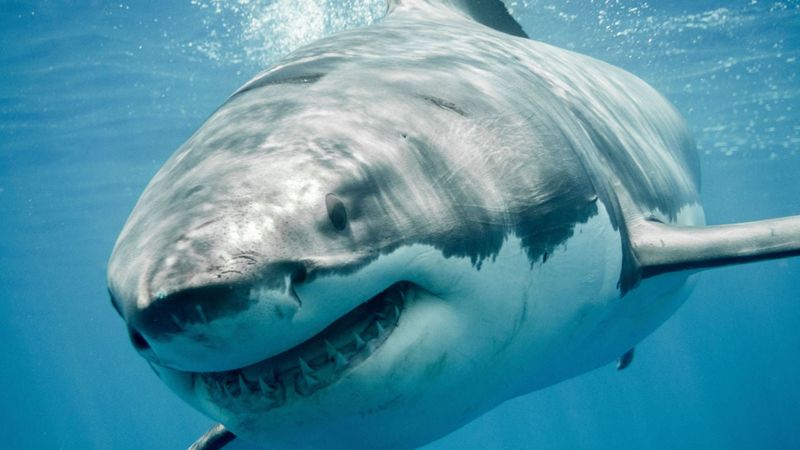
The great white shark has a significant role in culture, often depicted as a formidable predator. Movies and media portrayals have cemented its reputation as a fearsome creature.
These cultural depictions influence public perception, driving both fear and fascination. They often overshadow the important ecological role sharks play in the ocean.
Understanding this cultural impact is essential for shifting narratives towards conservation and appreciation. By focusing on education and awareness, society can learn to coexist with these misunderstood giants, recognizing their value beyond sensationalist portrayals.
Technological Tracking
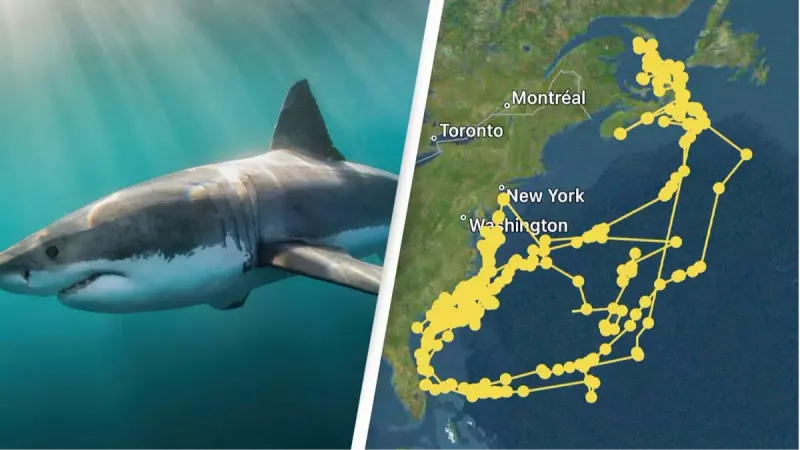
Modern technology allows researchers to track the movements of the largest great white shark with unprecedented precision. Satellite tags provide real-time data on location and behavior.
This technological advancement has revolutionized our understanding of shark ecology, offering insights into migration, feeding, and breeding habits.
The data collected supports conservation efforts by identifying critical habitats and migration corridors. Such technology ensures that protective measures are informed and effective, aiding in the preservation of these magnificent ocean dwellers for future generations.
Ecological Impact
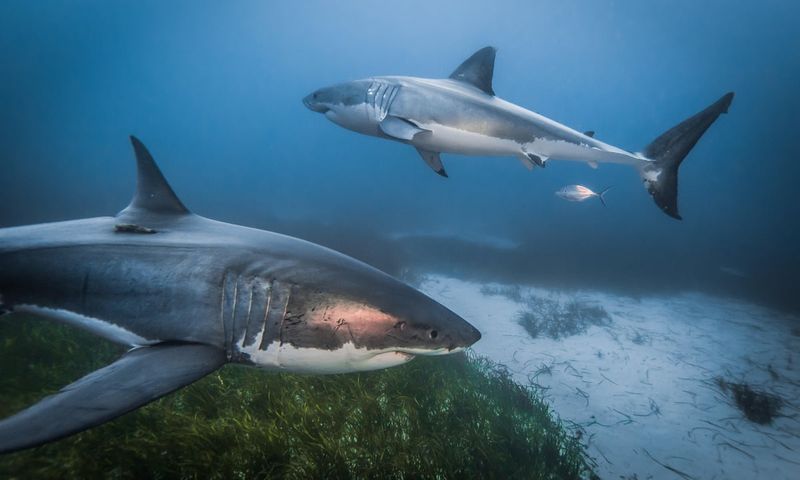
As an apex predator, the great white shark has a profound ecological impact on the Atlantic Ocean. It helps regulate prey populations, ensuring a balanced ecosystem.
By controlling the numbers of species like seals and fish, it prevents overpopulation and the resultant depletion of resources. This balance is crucial for maintaining biodiversity.
Scientists emphasize the importance of apex predators in promoting healthy marine environments. Conservation efforts focus on protecting these key species, as their decline can lead to cascading effects, disrupting the intricate web of ocean life. This underscores the shark’s ecological significance.

